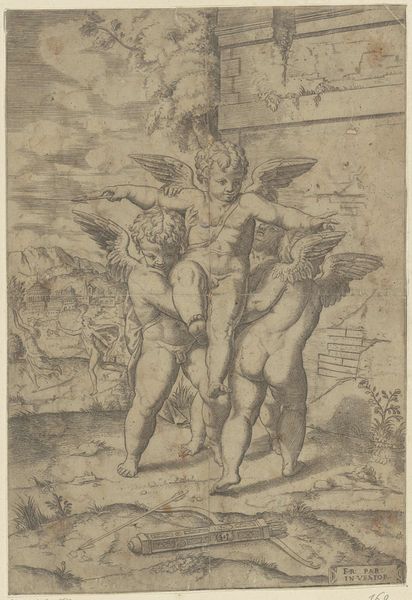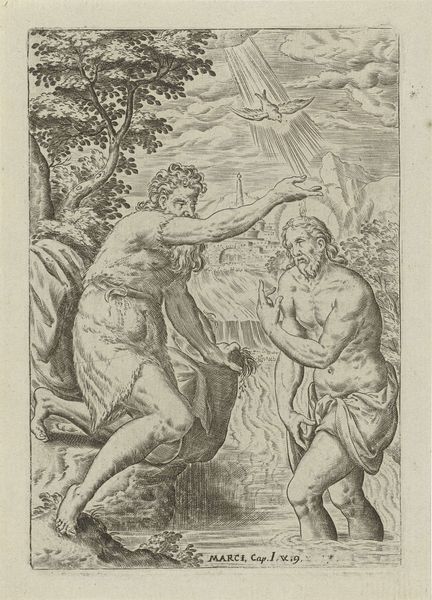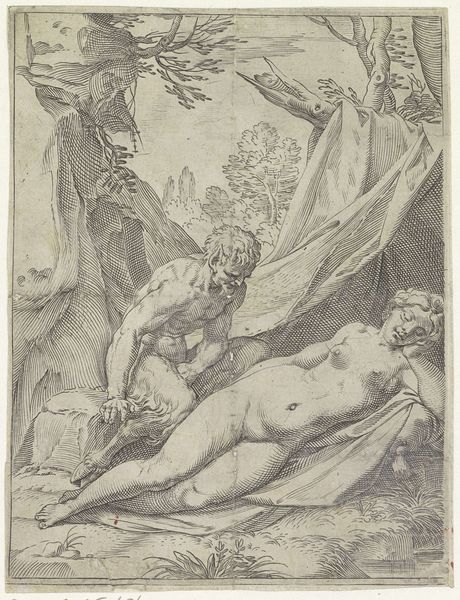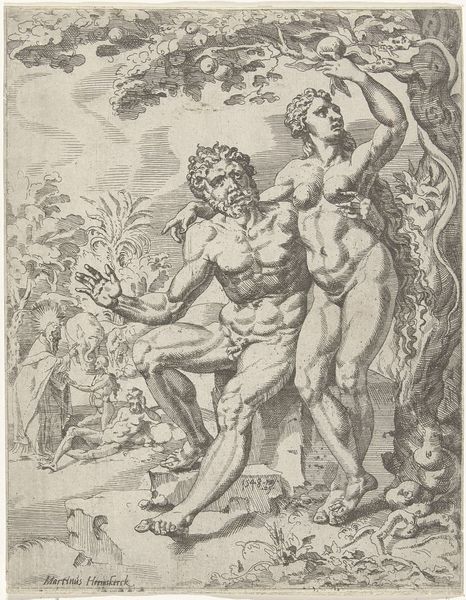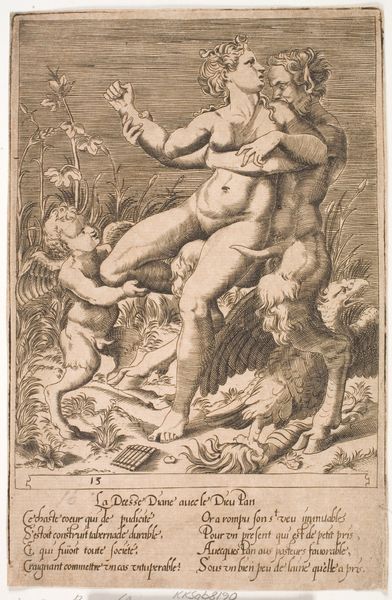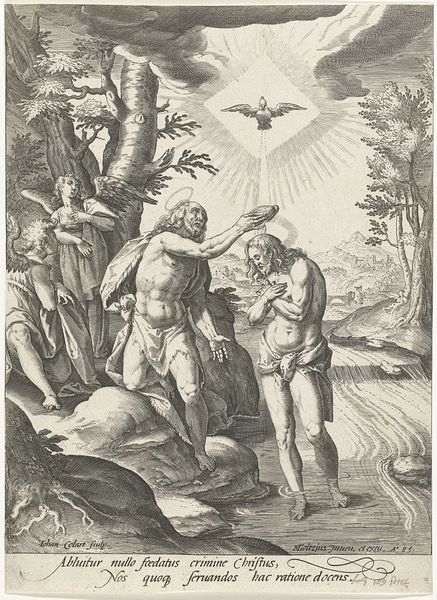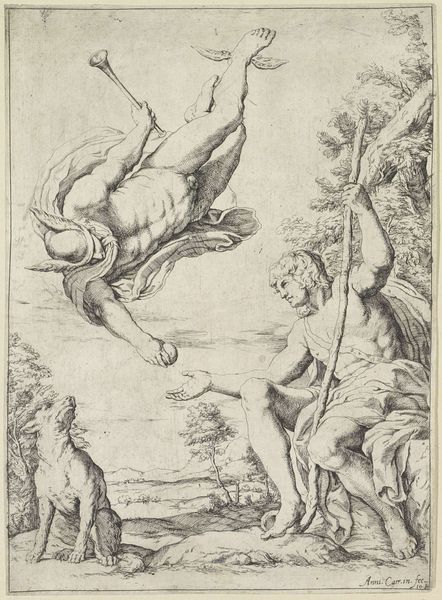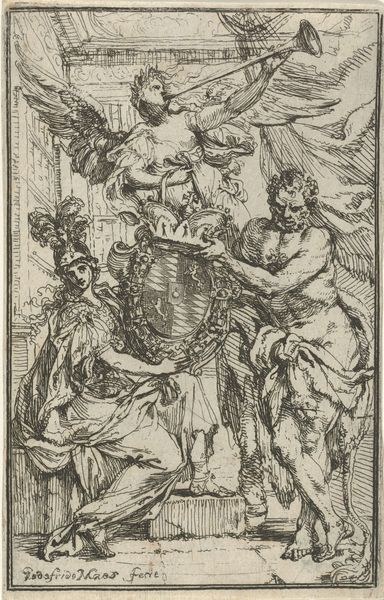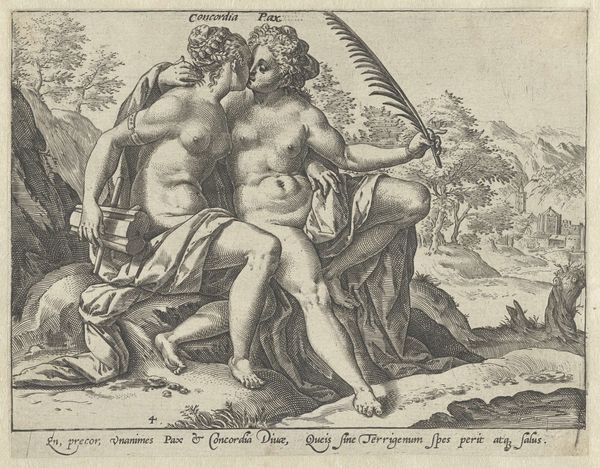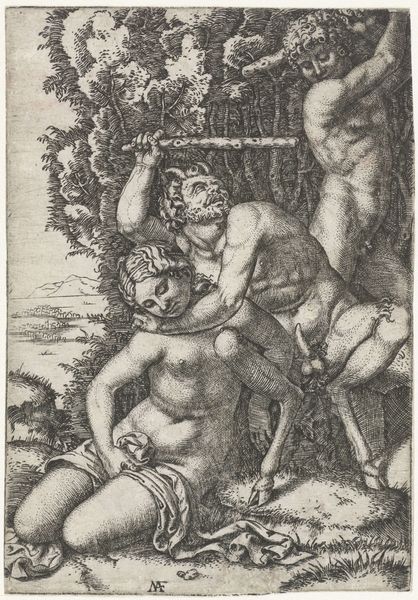
print, engraving
#
allegory
# print
#
pen sketch
#
figuration
#
italian-renaissance
#
engraving
Dimensions: height 314 mm, width 222 mm
Copyright: Rijks Museum: Open Domain
Editor: So this is "Amor en drie putti," an engraving by Giulio Bonasone, sometime between 1501 and 1580. The texture created through the engraving process really gives the cherubs a sculptural quality. I am struck by the collaborative nature of the piece; can you tell me what stands out to you in this artwork? Curator: I immediately focus on Bonasone's means of production, and the engraving's potential as a form of reproduction. The collaborative labour involved in printmaking during the Renaissance—the roles of the artist, engraver, and publisher—complicates notions of individual genius, don't you think? How does the readily available medium affect distribution, and therefore consumption? Editor: That's a great point. I was just looking at the cherubs, but the ease of producing prints does shift the whole game in terms of audience. Curator: Precisely! Consider how the image's subject matter – Amor, a symbol of desire and potentially even lust, circulated. Did these depictions become increasingly moralizing with wider consumption, perhaps reflective of the growing middle class and evolving societal values? Furthermore, examine the socio-economic conditions necessary for such specialized production. Where did Bonasone get his tools, his expertise, his patronage? Editor: Thinking about the access to materials, training, and the audience definitely casts this print in a new light. Thank you for bringing that materialist perspective to my attention. Curator: And you've prompted me to reconsider the very labor those putti represent. A cycle of labor and love intertwined perhaps?
Comments
No comments
Be the first to comment and join the conversation on the ultimate creative platform.
